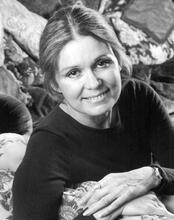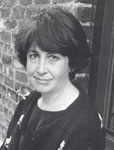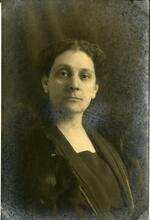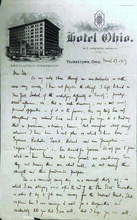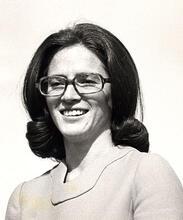Felice Nierenberg Schwartz
Recognizing the hurdles that can stop women from achieving, Felice Nierenberg Schwartz co-wrote How to Go to Work When Your Husband Is Against It, Your Children Aren’t Old Enough, and There’s Nothing You Can Do Anyhow. Schwartz attended Smith College, where she felt Jewish students were accepted but other minorities were clearly excluded. In response, she founded the National Scholarship Service and Fund for Negro Students, a guide to integrated colleges and a scholarship fund. After having children, Schwartz founded Catalyst, an organization to help women with children enter the workforce, and created a national network of resource centers and programs to enable women to work part time. She was praised by Fortune in 1990 as one of 126 world leaders, thinkers, and trendsetters.
Family
Felice Nierenberg Schwartz, a pioneer advocate for the advancement of women in the workplace, was born in New York City on January 16, 1925, the daughter of Albert and Rose (Kaplan) Nierenberg. Her father owned Etched Products Corporation, a metal engraving and etching plant. Upon her father’s death in 1951, Schwartz joined her brother Theodore in an effort to rescue the then-failing business. After three and a half years as vice president of production, years she would later refer to as the equivalent of a master’s degree in manufacturing, Schwartz and her brother sold the business at a modest profit. Married to Irving Schwartz, a physician, in 1946, Schwartz spent the next eight years raising their three children, Cornelia Ann, Tony and James Oliver.
Founding NSSFNS and Catalyst
The decade dedicated to saving the family business and raising her own family was bracketed by Schwartz’s founding of two national organizations. In 1945, shortly after graduating from Smith College, Schwartz founded the National Scholarship Service and Fund for Negro Students (NSSFNS), an organization dedicated to opening the doors of higher education to African-American students. In 1962, when her youngest child entered nursery school, she founded Catalyst, an organization dedicated to opening the doors of business to women.
The founding of NSSFNS bore some of the same marks as the founding of Catalyst seventeen years later. After attending Knox School in Cooperstown, New York, Schwartz was “greatly relieved” to arrive at Smith College and see so many Jewish girls around. (At the time, Jewish students made up about seven and a half percent of her class at Smith.) The safety in numbers that allowed her to stop “being afraid to be Jewish” sensitized her to the loneliness, isolation, and fear of her few fellow African-American students, who made up only an extremely small percent of Smith’s enrollment. After graduating from Smith, which she did in three years through an accelerated program, Schwartz worked briefly for the National Association for the Advancement of Colored People. Within a year after graduation, she founded the NSSFNS. Her efforts to boost African-American enrollment focused on encouraging and enabling African-American students to apply to college rather than on confronting institutions of higher education with their continuing legacy of discrimination. To that end, she published A Guide for Negro College Students to Interracial Colleges, the first directory of its kind. In addition to identifying and cataloging the over $14 million in available scholarships, she established a fund to increase the funds available to African-American students.
The founding of Catalyst was similarly rooted in Schwartz’s appreciation of options open to her but closed to others. During her years as a full-time mother, Schwartz was frustrated by how few educated family women believed, let alone shared her confidence, that they could return to the work world whenever they chose. Schwartz formed a board of five college presidents, Thomas C. Mendendahll of Smith College, Margaret Clapp of Wellesley College, Paul Ward of Sarah Lawrence College, Douglas Knight of Lawrence College and C. Easton Rothwell of Mills College, and began operating Catalyst out of her suburban home in Westchester County, New York. Its original mission was “to bring to our country’s needs the unused abilities of intelligent women who want to combine work and family.” As with NSSFNS, Schwartz was determined to put Catalyst’s definition “in terms that were acceptable and non-threatening.”
Schwartz at Catalyst’s helm
In the three decades in which she served as its president, Catalyst grew and expanded its focus to respond to emerging trends in the marketplace as well as in women’s lives. In its first decade, Catalyst developed a nationwide network of 250 resource centers and focused its efforts on counseling women who wished to combine family duties with part-time work. Concentrating on placing women in the public sector, the organization pioneered several job-sharing pilot projects in which two women shared a full-time job. In 1972, with her colleagues at Catalyst, Margaret H. Schifter and Susan S. Gillotti, she coauthored How to Go to Work When Your Husband Is Against It, Your Children Aren’t Old Enough, and There’s Nothing You Can Do Anyhow.
In the 1970s and 1980s, responding to a changing economy in which increasing numbers of women were forced to seek full-time work, Catalyst’s focus shifted from the public sector to the private sector and from counseling to research and advocacy. Catalyst began promoting the participation of women in corporations and their recruitment on corporate boards. These years saw the production of numerous groundbreaking studies on child care, parental leave, and dual-career families. Schwartz became a widely respected expert on work and family issues, lauded by both business executives and feminists, and Catalyst increasingly served in an advisory capacity to major companies and firms
Critiques and accolades
Schwartz’s final years at Catalyst were colored by the national controversy ignited over an article she published in 1989 in the Harvard Business Review. Schwartz intended the article, “Management Women and the New Facts of Life,” as a call to action to corporate leaders to remove the barriers to productivity and advancement still facing female managers. Among the barriers she highlighted was the failure of corporations to exhibit the flexibility necessary to accommodate different types of women within the corporate environment. Schwartz proposed two ends of a spectrum along which corporate women fall: the “career primary” woman and “career family” woman. She suggested that creating policies to accommodate the “career family” woman was good business. As a result of a New York Times article on her idea headlined “‘Mommy Career Track’ Sets Off a Furor,” Schwartz became known as the “mommy track author” and the subject of hundreds of articles on the “mommy track controversy.” Ironically, after twenty-seven years dedicated to the advancement of women, the founder of Catalyst came under attack for establishing barriers to women’s advancement. In Breaking with Tradition: Women and Work, The New Facts of Life, Schwartz grounded the often painful controversy surrounding her article in “the conspiracy of silence” on the part of feminists as well as business that too often “conceals the experience of women in business” and prevents problems from getting addressed.
One year after the publication of the New York Times article on the “mommy track,” Felice Nierenberg Schwartz was featured in Fortune magazine’s sixtieth anniversary issue as one of 126 world leaders, thinkers, and trendsetters. Honorary degrees were bestowed on her by Pace University (1980), Smith College (1981), Marietta College (1989), and Chatham College (1990). Schwartz left Catalyst in 1993 and died at her home on February 8, 1996, just one month after completing her third book, The Armchair Activist: Simple Yet Powerful Ways to Fight the Radical Right.
Selected Works by Felice Nierenberg Schwartz
The Armchair Activist: Simple Yet Powerful Ways to Fight the Radical Right (1996).
Breaking with Tradition: Women and Work, The New Facts of Life (1992).
A Guide for Negro College Students to Interracial Colleges (n.d.).
How to Go to Work When Your Husband Is Against It, Your Children Aren’t Old Enough, and There’s Nothing You Can Do Anyhow, with Margaret H. Schifter and Susan S. Gillotti (1972).
“Management Women and the New Facts of Life.” Harvard Business Review (January/February 1989).
Current Biography Yearbook (1993).
Hopkins, Ellen. “Who Is Felice Schwartz and Why Is She Saying Those Terrible Things about Us?” Working Woman 15 (October 1990): 116+.
Lewin, Tamar. “‘Mommy Track’ Sets Off a Furor.” NYTimes, March 8, 1989.
Obituary. NYTimes, February 10, 1996, 52.
Schwartz, Felice Nierenberg. Smith Centennial Study. Oral History Project, Transcript recorded September 13, 1971. Smith College Archives, Northampton, Mass..
Who’s Who of American Women (1992–1993).

